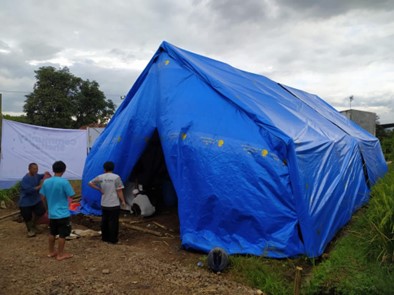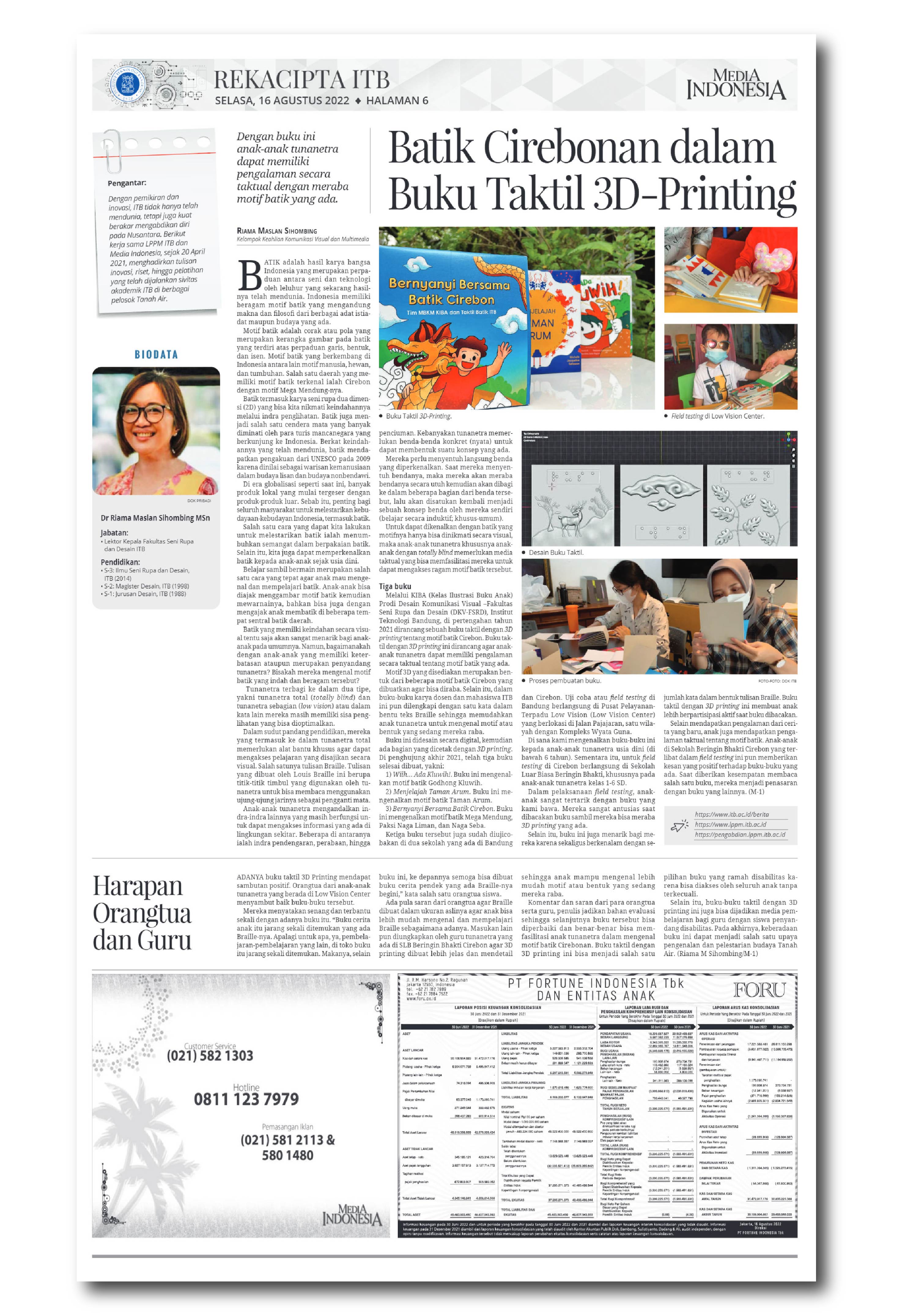ITB Provided Bamboo Shelters for Victims of the Cianjur Earthquake
By Adi Permana
Editor Adi Permana

CIANJUR, itb.ac.id—The earthquake that hit Cianjur, West Java on 22 November 2022 left thousands of houses heavily damaged. Many households were affected, and assistance is crucial, especially the urgency for building tents/shelters.
ITB and Rumah Amal Salman helped victims of the earthquake by constructing temporary shelters made of bamboo. Designed by the ITB SAPPD lecturer, Dr.-ing. Andry Widyowijatnoko, S.T., M.T., he made the shelter in consideration of its quick set-up and good accommodation.
Bamboo is selected as the main material due to its ease of access, abundance, and low price. In addition to its logistics, its internal strength is remarkable as support. "Bamboo has been well-known as a good temporary semi-permanent material since long ago," Dr. Andry explained.
The bamboo shelters were able to be built in a short time- approximately in one day- starting from laying of the first frame until its subsequent construction processes. The secret of its rapid assembly is its simple installation technique and structural strength that depends on the shape that causes its space.
"Traditionally, the people there are familiar with bamboo as a construction material. However, applying the nut-bolt technique with bamboo is new for them. Fortunately, they can learn this technique fast and quickly contributed to the shelters’ construction," he added.
Dr. Andry’s innovative bamboo shelter is based on the earthquake shelter he had worked on before. "I had already prepared ready-made structures and models. My team and I took a lot of inspiration from previous cases, such as in Palu and Lombok".
Due to differences in location and environment, new issues arose; thus, the designs that will be built could not simply be a copy from the previous cases.
"The wind strength in Cianjur is different than Lombok and Palu. Because of this, we must create a design that adapts to its surroundings while maintaining a similar structure," Dr. Andry elaborated.

"This bamboo shelter is able to accommodate more than 50 people with better spatial comfort".
Based on the existing standards, the dimension of shelter for victims of natural disaster is 5.5m x 12m x 3.25m. Most tents use tarps as their cover which conducts heat from the sun to the space below it directly. With less altitude, people receive its heat flow.
The bamboo shelter also utilizes the same cover except its ability to provide more comfort. The minimum height of this shelter reaches 5m; hence, heat exposure does not interfere with the space under it. Moreover, the shelter can reach a span of 8x12m with a height of 4-5m.
"Previously, this bamboo shelter was able to stand for up to 6 months. Reports received from the team revealed that the people feel cooler and more comfortable using this shelter."
Currently, shelters serving as emergency mosques have also been established on 2 December 2022.
"My team and I are very pleased with the enthusiasm from both the community and ZENI members on the site. Many take photos of the shelters and want to learn more about them," Dr. Andry said when asked what his future hopes are for his innovations in disaster mitigation assistance.
In the future, Andry and his team planned to hold a workshop about their bamboo shelter to rescue teams so that its principles and construction can be shared with people in need.
Reporter: Madeline Abigail Lukito (Architecture, 2020)
Translator: Ruth Nathania (Environmental Engineering, 2019)

.jpg)
.png)
.jpg)
.jpg)
.jpg)


